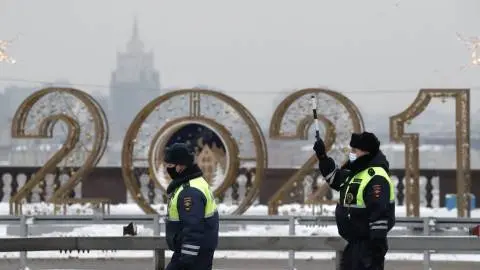China: Deleveraging reform resumes
The Chinese economy has recovered well, and therefore the government has restarted structural reform. We have revised our USD/CNY forecast for 2021. The risk is a spike in Covid cases due to huge numbers of people travelling over the Chinese New Year
The short term outlook
Though Covid cases have edged up in China, the numbers are still very low (around 10 to 40 cases per day). The economy is therefore still running well in terms of the manufacturing sector as well as the service sector. External demand could be at risk due to lockdowns in some major export markets. But the delivery of holiday orders should have been completed before these lockdowns took place. We are maintaining our GDP forecast at 5.5% year-on-year in 4Q20 from 4.9% YoY a quarter ago. Full-year GDP growth should therefore be 1.7% in 2020 from 6.0% in 2019.
The big risk to the economy will come at Chinese New Year when flows of people peak. The city of Beijing has already announced policies to restrict those flows as there have been more cases found around the capital. Other major cities may follow suit if they find more Covid cases when people start to travel to their hometowns and then back to work after the holiday towards the end of February. This risk would be lower if more people could be vaccinated before they travel, which is also the government's intention.
China GDP growth rebounded after 1Q20

The vaccine effect
Vaccinations have started to be administered to medical staff, other high-risk groups and the most needed, notably the elderly in Mainland China, and will later be rolled out to the general public. The willingness to receive vaccines is quite high.
The government believes if 60% to 70% of the population receives the vaccine, protection to the general public will be far more effective.
The strength of the recovery
As Covid cases remain low, the government has restarted structural reforms.
The most obvious of these reforms is deleveraging, which allows the market to determine which companies will fail. But the biggest risk, which is the real estate sector, is simply too big to fail. The government is therefore squeezing this bubble by limiting bank lending to real estate borrowers and mortgagors. It is expected that some small property developers will default on their bonds this year.
The government has also picked up its anti-corruption campaign. This is a positive sign of the governance system.
Another move which has been extended from October 2020 is exchange rate reform. The USD/CNY has been stronger and broken some key levels. The weak dollar is one key driver but without the central bank’s willingness to reform the exchange rate, by phasing out the counter-cyclical factor, the yuan would not have appreciated so quickly. As a result, we are revising our USD/CNY year-end forecast to 6.20 from 6.30.
This publication has been prepared by ING solely for information purposes irrespective of a particular user's means, financial situation or investment objectives. The information does not constitute investment recommendation, and nor is it investment, legal or tax advice or an offer or solicitation to purchase or sell any financial instrument. Read more
Download
Download article
7 January 2021
Seriously, keep the faith! This bundle contains 10 Articles
